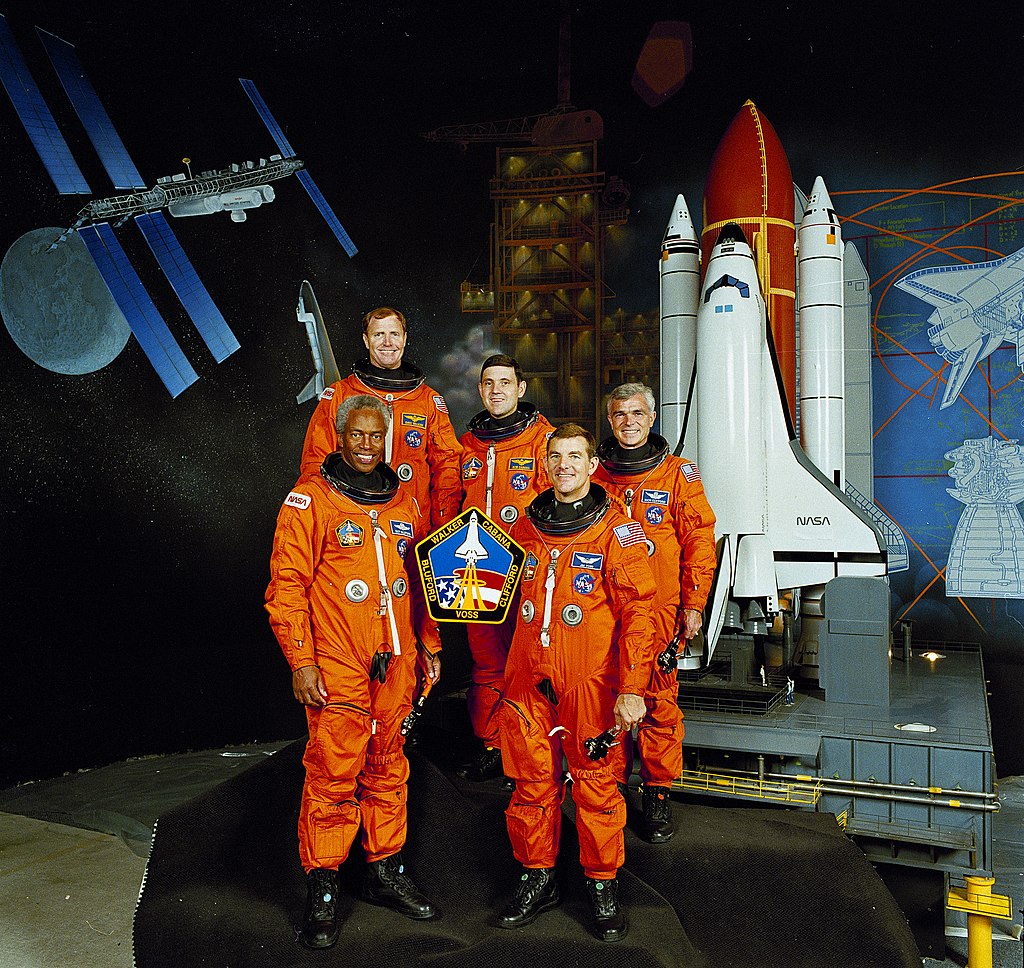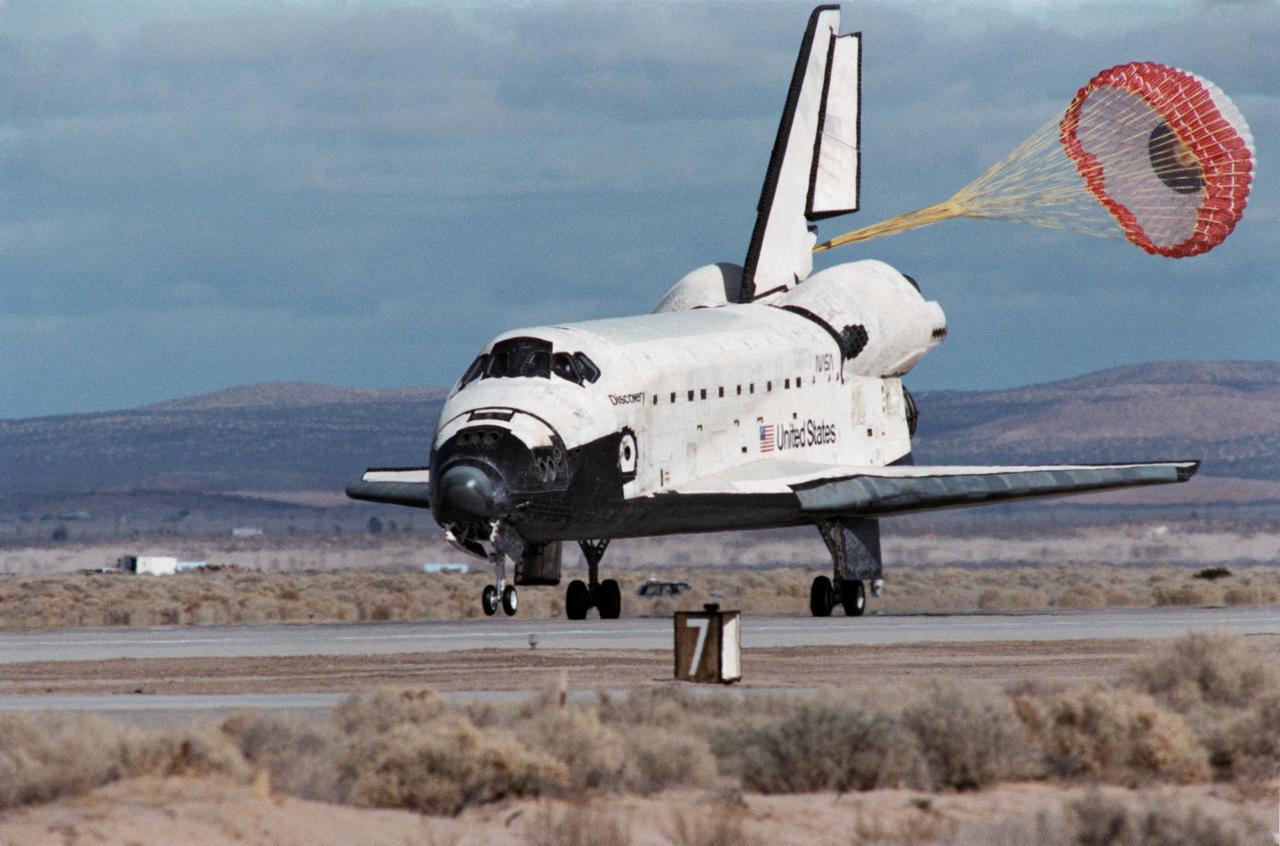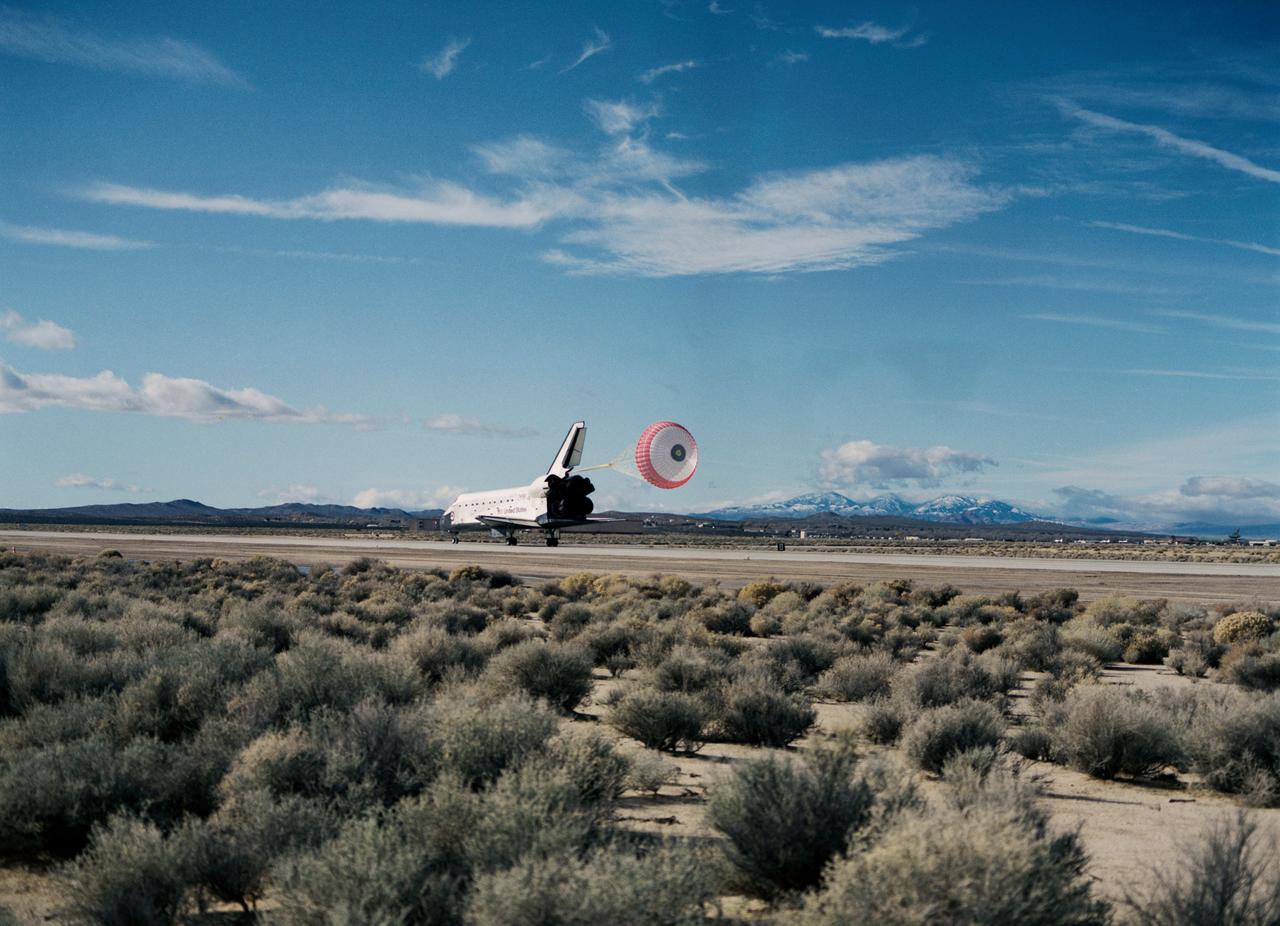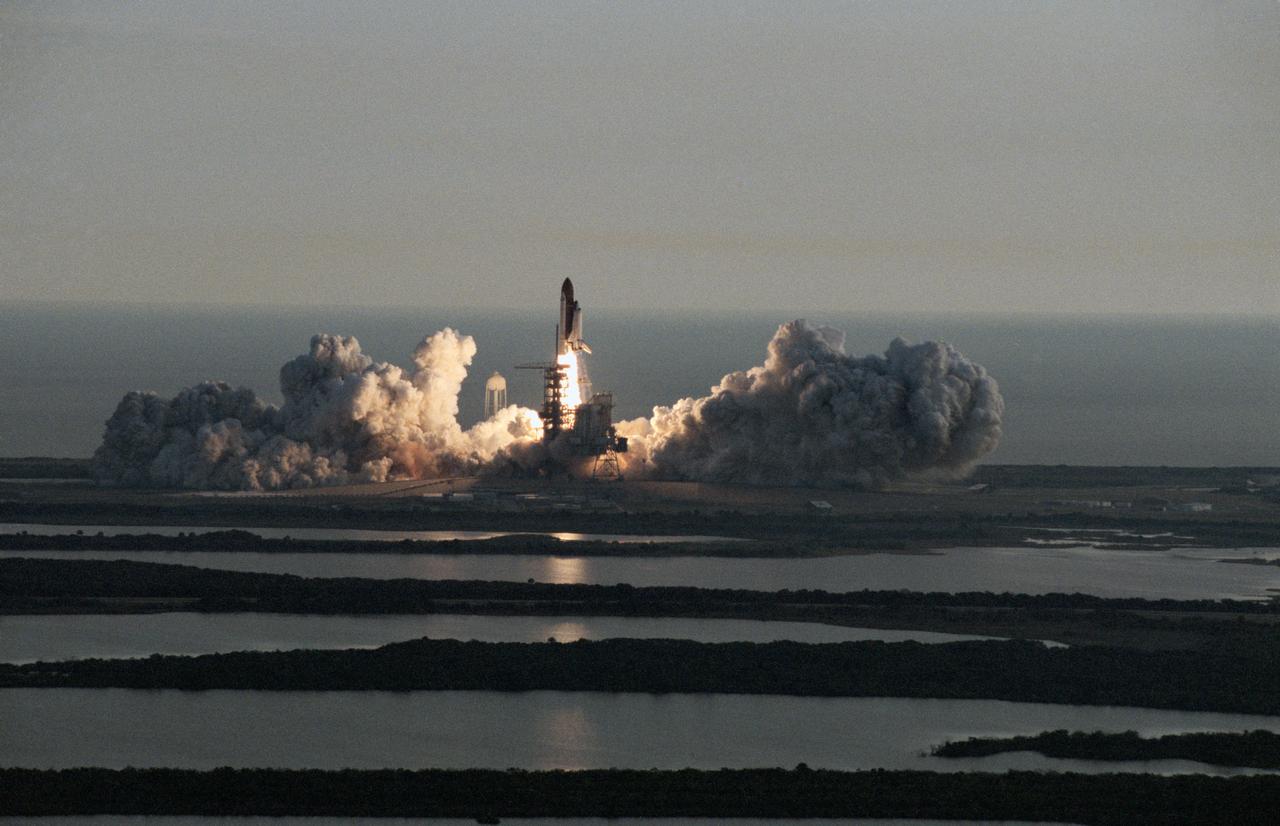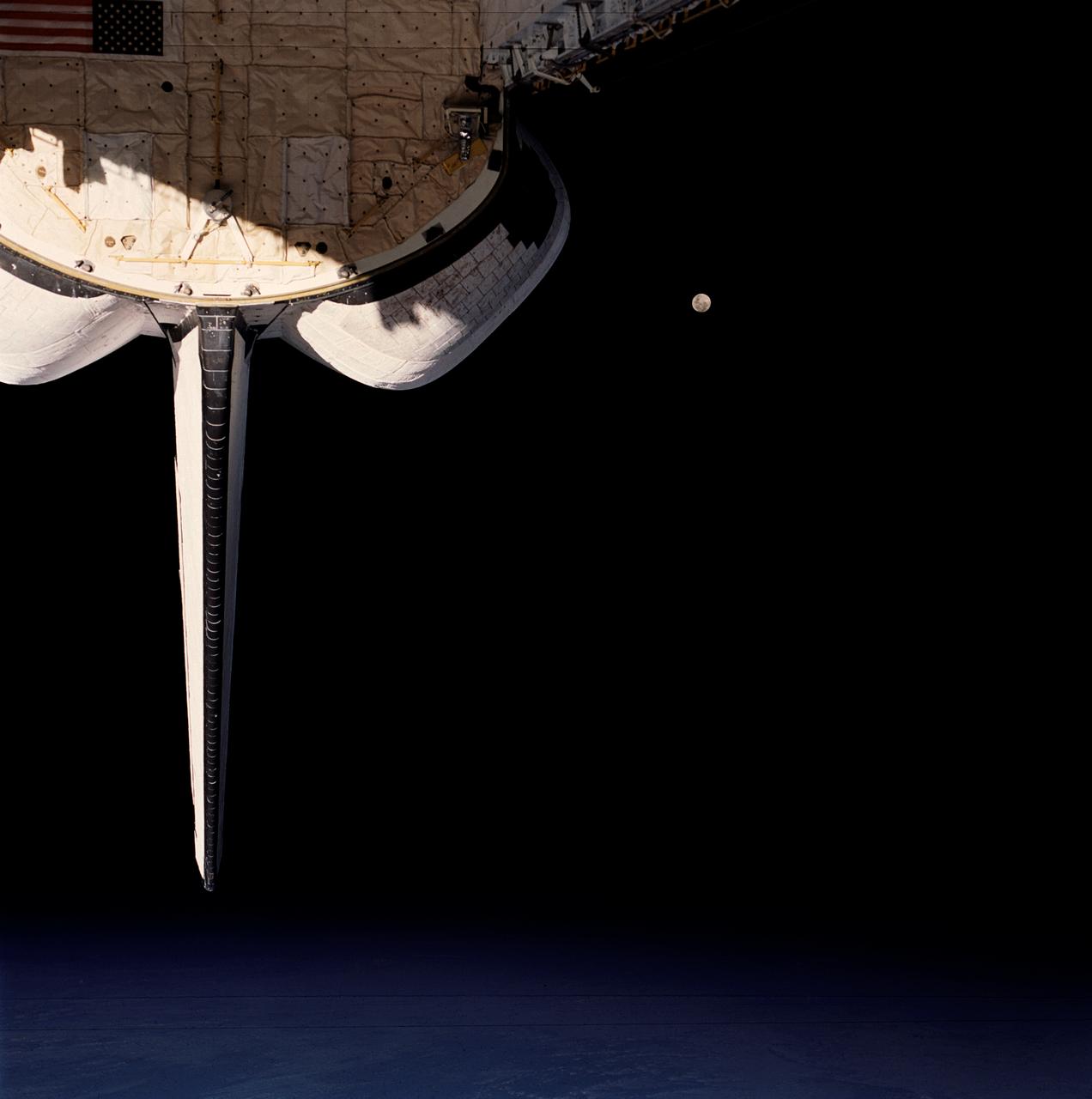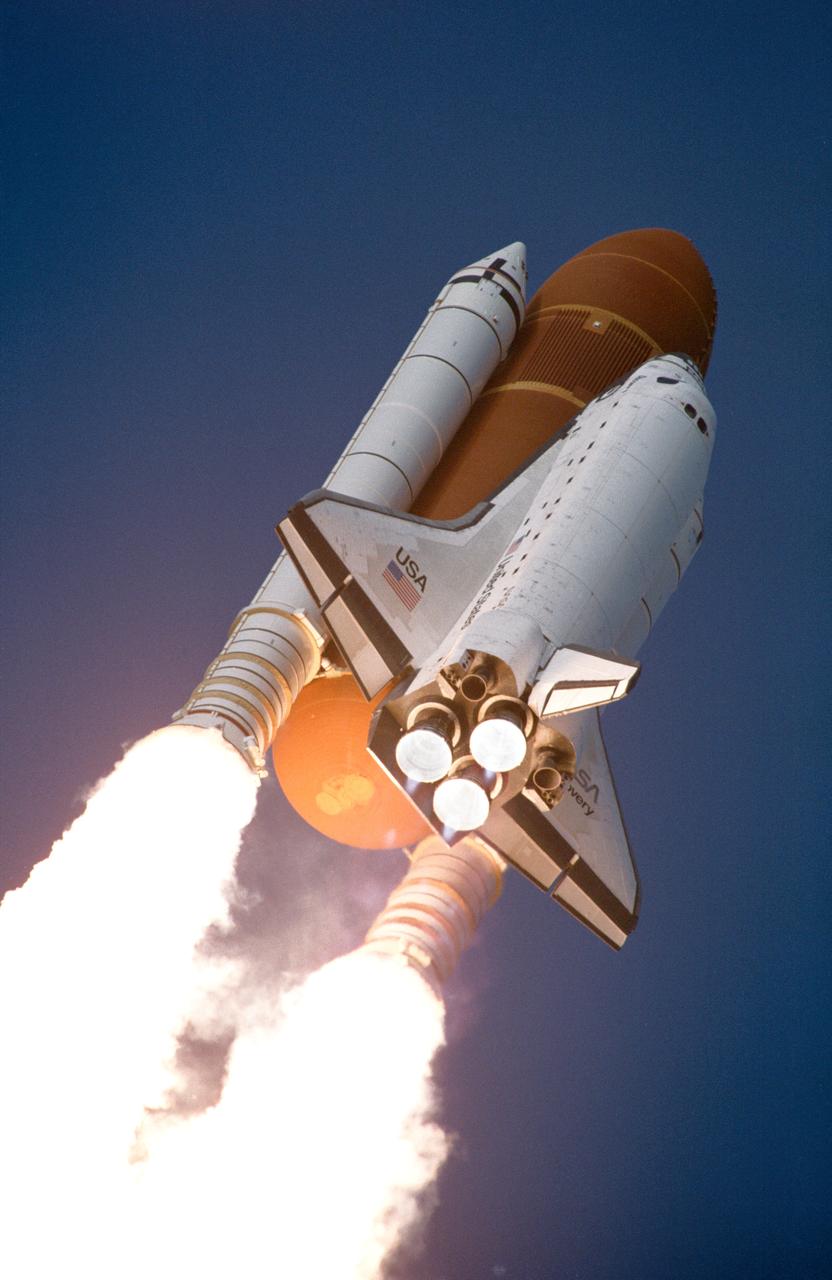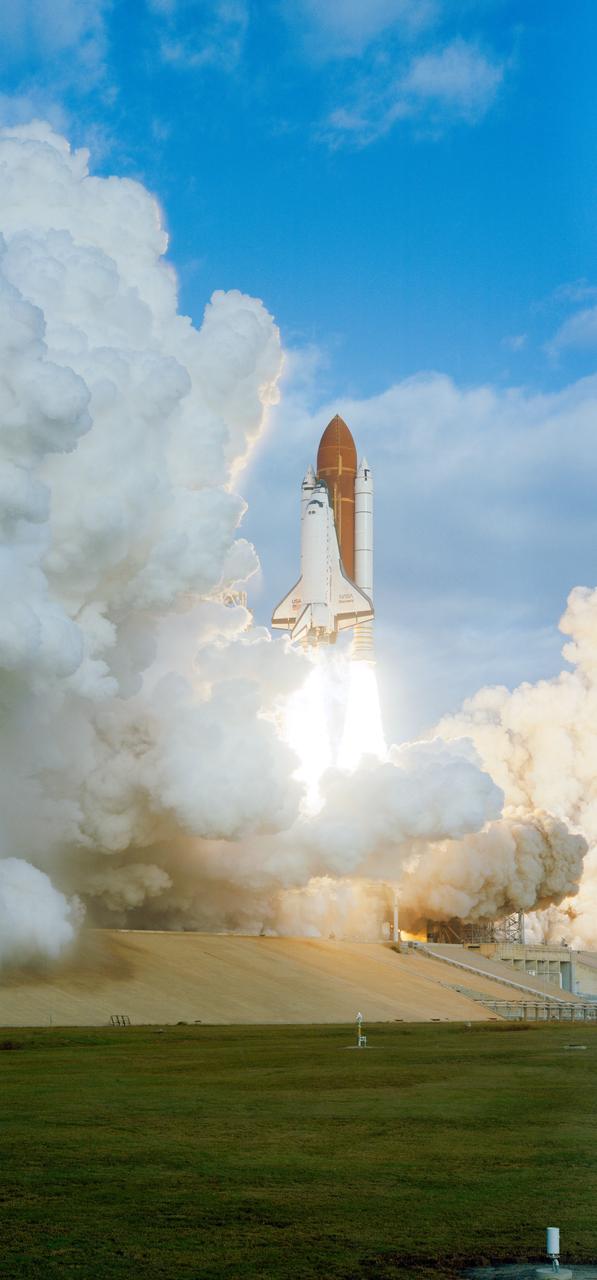STS-53 Fact Sheet
By Cliff Lethbridge

STS-53 — Discovery
52nd Space Shuttle Mission
15th Flight of Discovery
Crew:
David M. Walker, Commander
Robert D. Cabana, Pilot
Guion S. Bluford, Jr., Mission Specialist
James S. Voss, Mission Specialist
Michael R. Clifford, Mission Specialist
Orbiter Preparations:
Tow to O.P.F. (For Modifications) – February 16, 1992
Rollover to V.A.B. (For Temporary Storage) – August 8, 1992
Rollover to Orbiter Processing Facility – August 17, 1992
Rollover to Vehicle Assembly Building – November 3, 1992
Rollout to Launch Pad 39A – November 8, 1992
Launch:
December 2, 1992 – 8:24:00 a.m. EST. Launch was delayed nearly 90 minutes to allow the rising sun to warm the orbiter’s external fuel tank following ice buildup during overnight temperatures in the upper 40’s.
This was the first launch of Discovery following extensive modifications completed following STS-42 in February, 1992. About 80 modifications were made to Discovery, including the installation of a drag chute.
Landing:
December 9, 1992 – 12:43:47 p.m. PST at Runway 22, Edwards Air Force Base, California. Rollout distance was 10,165 feet. Rollout time was 73 seconds. Mission duration was 7 days, 7 hours, 19 minutes, 47 seconds. Landing occurred during the 116th orbit.
Discovery was diverted to Edwards Air Force Base due to poor weather at the KSC primary landing site. The drag chute was successfully deployed in operational mode prior to nosegear touchdown. A small leak in a forward thruster delayed crew egress.
Mission Summary:
This was the tenth and final dedicated Department of Defense mission in the Space Shuttle program.
Non-classified payloads included GAS Glow Experiment (GLO)/Cryogenic Heat Pipe Experiment (CRYOHP) and Orbital Debris Radar Calibration Spheres (ODERACS).
Other payloads included Battlefield Laser Acquisition Sensor Test (BLAST), Cloud Logic to Optimize Use of Defense Systems (CLOUDS), Cosmic Radiation Effects and Activation Monitor (CREAM), Fluid Acquisition and Resupply Experiment (FARE), Hand-held, Earth-oriented, Real-time, Cooperative, User-friendly, Location-targeting and Environmental System (HERCULES), Microcapsules in Space-1 (MIS-1), Radiation Monitoring Experiment III (RME III), Space Tissue Loss (STL) and Visual Function Tester-2 (VFT-2).
SELECTED NASA PHOTOS FROM STS-53
